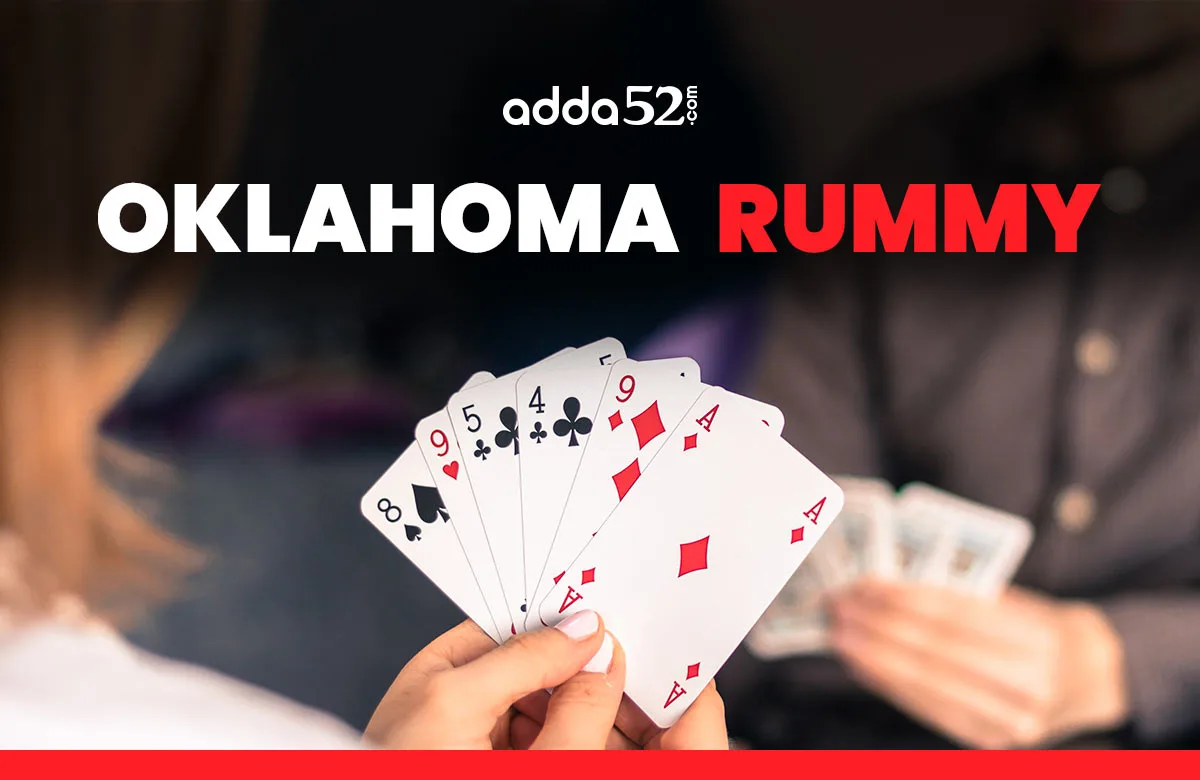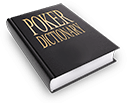Oklahoma Rummy Card Game

Introduction
Gin Rummy traces its roots to the beginning of the 1900s and has undergone several fascinating iterations since then. One such standout variation is Oklahoma Gin Rummy, which infuses a new element of excitement into the classic game.
Here’s everything you need to know about this thrilling card game.
What is Oklahoma Gin Rummy Card Game?
The game of Oklahoma Gin Rummy is a well-received adaptation of the classic Gin Rummy. Its unique approach to determining knock value and initiating gameplay sets it apart.
Objective
The primary objective in Oklahoma Gin Rummy is to form melds (combinations of sets and runs) and be the first player to knock, thereby concluding a round with as few deadwood points as possible. The game persists until one participant attains an established score limit of either 100 or 150 points.
How to Play Oklahoma Gin Rummy
- The game is typically played by 2 players using a standard 52-card deck (Jokers are not used).
- Each player is dealt 10 cards. The dealer alternates every round.
- The remaining cards are placed face down to form the stock pile. The top card of the stock pile is turned face up to start the discard pile.
- The rank of the upcard (the first card of the discard pile) determines the maximum points of deadwood allowed for knocking. For example, if the upcard is a 4, a player can only knock if his deadwood totals 4 points or fewer. If the upcard is a face card (J, Q, K), the deadwood limit is 10 points. If it is an Ace, only a Gin hand (zero deadwood) is allowed for knocking.
Oklahoma Gin Rummy Rules
- Players take turns drawing and discarding cards. On each turn, a player:
-Draws one card from either the stock pile or the discard pile.
-May lay down melds if they have knocked.
-Discard one card to the discard pile.
- Melds can be sets (three or four cards of the same rank) or runs (three or more consecutive cards of the same suit).
- A player can knock if his deadwood is equal to or less than the value of the knock card. Knocking ends the round. To knock, the player discards a card face down and reveals their melds and deadwood.
- If a player knocks with no deadwood (all cards are part of melds), it is called ‘Gin’. Gin results in a higher score.
- If the opponent’s deadwood is less than or equal to the knocker’s deadwood, it is called an undercut. The opponent scores a bonus for the undercut.
- The sum of the card values is not part of melds. Face cards (J, Q, K) are worth 10 points, Aces are worth 1 point, and numbered cards are worth their face value.
- If a player goes Gin, they score a bonus (typically 25 points) plus the opponent’s deadwood points.
- If an opponent undercuts the knocker, they receive a bonus (usually 25 points) plus the difference between the two players' deadwood points.
- If a player knocks without Gin, they score the difference between the deadwood points.
- The game is played in rounds until one player reaches the target score, often 100 or 150 points.
- If the stockpile is reduced to two cards, the round ends in a draw and no points are scored. The cards are reshuffled, and the same player deals again.
Oklahoma Gin Rummy Tips
Here are some tips to help you improve your Oklahoma Gin Rummy game -
Understanding the Knock Value
Flip Card Impact: At the start of each round, a card is flipped, and its value determines the maximum points a player can have to knock (for example - a 7 of hearts means the knock value is 7).
Ace Handling: If an Ace is flipped, the hand must be played to gin (for example - no knocking allowed), making it a more challenging and strategic round.
Card Selection Strategy
High Cards vs. Low Cards: While high cards (10s, Jacks, Queens, Kings) can help form high-value melds, they are also risky because they can add up quickly in your hand if not melded.
Middle Cards Advantage: Focus on keeping middle-value cards (4s to 9s) as they are versatile and less risky for accumulating deadwood points.
Matching Suits and Sequences: Prioritize creating sequences (runs) within the same suit over sets (same rank) as they are often easier to extend and complete.
Drawing and Discarding Tactics
Monitor the Discard Pile: To avoid discarding cards that could potentially benefit your opponent, observe the discard pile closely to infer their possible hand.
Balanced Draw: Depending on the cards you require and the probability of your adversary acquiring certain discards, switch between selecting from either the deck or discard pile.
Discard Strategy: Discard high-value cards early if they are not part of your planned melds to reduce your deadwood. Also, avoid discarding cards that complete potential melds for your opponent.
Opponent Observation
Behavioural Cues: Observe your opponent’s drawing and discarding behaviour. They might be close to completing a meld if they repeatedly draw from the discard pile.
Predictive Analysis: Use the information gathered from their actions to predict their potential hand and adjust your strategy accordingly.
Melding and Laying Off
Early Melding: Try to form and lay off melds early in the game to reduce your deadwood and prepare for an unexpected knock by your opponent.
Laying Off Efficiency: When an opponent knocks, efficiently lay off your unmatched cards onto their melds to minimize your deadwood points.
Deception and Bluffing
Intentional Discards: Occasionally discard cards that might mislead your opponent about your strategy. For example, discarding a low-value card you don’t need can make your opponent think you have high deadwood.
Feigning Weakness: Sometimes, holding onto a particular card and not melding immediately can make your opponent believe you have a weak hand, prompting them to knock prematurely.
Adjusting to Flip Card Rules
Flexibility in Strategy: Adapt your strategy based on the knock value indicated by the flip card. If the value is low, prioritize forming melds quickly to knock before your opponent.
High Knock Values: If the flip card has a high value, be more cautious and focus on forming a gin hand, as the game is likely to progress longer, giving both players more chances to improve their hands.
Score Management
Keep a close track of scores: Track scores, both yours and your opponent’s, to determine the level of risk you can take. If you are ahead, play more conservatively to maintain your lead.
Bonus Points: Aim for a gin hand when possible for the additional bonus points it offers. Winning by gin can significantly boost your score, especially in a close game.
Practice and Patience
Regular Practice: Like any card game, regular practice is crucial to improve your skills and understanding of the game.
Patience: Develop patience and avoid making hasty decisions. Carefully consider each move and its potential impact on the game’s outcome.
Frequently Asked Questions
How do you play Oklahoma Rummy?
Oklahoma Rummy, a variant of Gin Rummy, deals ten cards to each player, and the knock value for that round is decided by flipping one card from the deck. The goal for players is to develop melds (runs or sets) using either the deck or discard pile while reducing deadwood as much as possible. The game continues until a player knocks or goes gin, and the round ends. The objective is to reach a predetermined score by winning rounds and scoring points for low deadwood or gin.
What is the difference between Gin Rummy and Oklahoma Gin?
The key difference between Gin Rummy and Oklahoma Gin is the knock value determination. In Gin Rummy, players can knock with 10 or fewer deadwood points, while in Oklahoma Gin, the knock value is set by a flipped card at the round's start. If an Ace is flipped, players must play to gin, with no knocking allowed.
How many cards are in Oklahoma Gin?
At the beginning of Oklahoma Gin, each player is dealt a total of ten cards from a standard 52-card deck. To determine the knock value for that particular round, the top card is flipped over. During gameplay, players must draw and discard cards to create melds and minimize their deadwood.
Conclusion
Playing Oklahoma Gin Rummy is an immensely enjoyable experience that tests and enhances your strategic thinking and decision-making skills. The element of knock value adds unpredictability to the game which keeps it exciting for all players involved. It serves as a fantastic opportunity to bond with loved ones while also providing competitive yet fun-filled moments together.
